Bioenergy - draft policy statement: consultation
We are seeking views on the priorities and principles that we have set out for the use of bioenergy, as well as views on the potential to scale up domestic production of biomass via planting of perennial energy crops.
Chapter 2: Bioenergy – Supply and Production
Biomass feedstock comes in many forms and has great flexibility in how it can be processed. We define biomass as organic matter that can be used as a fuel.
Bioenergy is an integral part of a circular economy. Biogenic wastes and residues that are existing sources of emissions can become valuable resources. The majority of biomass used for energy comes from trees and other vegetation but other biogenic material, such as manure, food waste or used cooking oil can also be used. Different biomass feedstocks have different sustainability implications, but we are clear that biomass must only be used where it can be shown to be sustainable.
The Climate Change Committee (CCC) state in their Biomass in a Low Carbon Economy report that “the preferential use of BECCS […] is consistent with our assessment that applications involving long-term storage of carbon offer the best use of finite biomass feedstocks from a carbon perspective.”
The BECCS Task and Finish Group provides the following description of how the BECCS process works and the types of feedstocks that can be used:
- BECCS relies upon the thermo- or biochemical conversion of biomass to supply an energy service, and the addition of CO2 capture and storage (CCS) to recover biogenic CO2 and geologically sequester it, thus permanently removing it from the atmosphere.
- BECCS can use a variety of biomass feedstocks, from dedicated energy crops to waste-derived biomass, and agricultural and forest residues. The biomass conversion process can include combustion, gasification, digestion, or fermentation to deliver electricity, heat, liquid or gaseous biofuel, or hydrogen.
Sustainable biomass is a finite resource and with demand expected to increase as we move to a net zero future, Scotland must prioritise its use to ensure we maximise its value in reducing our emissions and in displacing fossil fuels.
2.1. Biomass Sustainability
Whilst combustion of biomass does produce emissions at the point of use, these emissions are part of the biogenic carbon cycle. Carbon that was absorbed from the atmosphere when the plants grew is returned when combusted, unlike fossil fuels where the carbon that has been stored underground for millions of years is released and is primarily responsible for the observed increase in atmospheric CO2 concentrations.
For biomass to be considered as a low carbon fuel it should comply with strict land and greenhouse gas criteria (together known as sustainability criteria). Land criteria focus on the land from which the biomass is sourced and the greenhouse gas criteria account for the life cycle emissions of the biomass. Harvesting, processing, storage and transport emissions of the biomass feedstock must also be accounted for when calculating the Greenhouse Gas (GHG) emissions savings.
Well managed forests or energy crops can reabsorb carbon emissions from combustion in a relatively short time, resulting in lower net emissions. This is not possible from primary woodland, and wider biodiversity and ecosystem impacts should be included in the sustainability criteria along with potential societal impacts.[2]
Scotland has planted over 50,000 hectares of woodland since 2018, with a mix of native species and fast growing conifers. A recent report by Forest Research suggested that conifers can capture up to eleven times as much carbon as broadleaved woodlands in the short term.
Felling Permissions are required to fell trees in Scotland and applications will be assessed against the Sustainable Forest Management principles as set out in the UK Forestry Standard. The majority of the harvest from Scottish forestry is softwood, with about 12% of this being brash and small roundwood which is used as wood fuel. Section 2.2 provides more detail on domestic biomass supply.
The UK Government support schemes already have strict biomass sustainability criteria – which have been based on the EU’s Renewable Energy Directive sustainability criteria. We support and agree with the UK Government’s ambition to strengthening the strict criteria, where required, and continuing to deliver genuine greenhouse gas savings. As set out in the UK Government’s Biomass Strategy, we support their key commitment to develop a cross-sectoral sustainability framework, and we urge the UK Government to develop this as soon as possible.
The National Audit Office have recommended that greater resources are directed towards monitoring and demonstrating compliance. These actions would provide greater transparency and trust that all sectors are meeting the highest standards possible. We will work with the UK Government as these important commitments are implemented.
2.2. Competition for supply
The use of bioenergy has been forecast to increase under nearly all pathways to net zero. The International Energy Agency (IEA) suggests an increase of 8% per year until 2030 and more than 80 countries have policies in place which support the use of biofuels.
We are increasingly seeing incentives that support bioenergy technologies, such as under the U.S. Inflation Reduction Act and the European Green Deal. These incentives and subsidies, alongside the increasing number of commitments from countries to reduce their emissions, will continue to increase global demand for sustainable biomass and likely push market prices up.
The Climate Change Committee’s “Delivering a reliable decarbonised power system” report recognised this and stated that any over-reliance on imported biomass may jeopardise our ability to meet our net zero targets and risks taking a greater than fair share of the finite resources available.
The projected growth in demand for bioenergy also highlights the importance of Monitoring, Reporting and Verification (MRV) to ensure that only sustainably sourced bioresources are being used.
On top of the expected increase in biomass demand, the fragility of supply chains for biomass were brought into focus following Russia’s illegal invasion of Ukraine. The sudden imposition of sanctions on Russia emphasised the risk of sourcing biomass from volatile or undemocratic regimes. Prior to this, there were significant amounts of biomass pellets being imported to the UK from Russia. This underlines the need to ensure our future energy system is resilient, diversified, and that we have constant access to a variety of reliable, sustainable energy supplies.
It is important for Scotland to further develop a stable and sustainable domestic supply of biomass as we look to increase the use of bioenergy in our energy system. A strong domestic supply chain can help to provide energy security, transparency and accurate lifecycle emissions calculations.
2.3. Domestic biomass availability
Following the publication of the Bioenergy Update in 2021, we commissioned a review of the potential domestic bioresource, including a forecast of what could be available out to 2045. The research looked at the availability of both dry and wet bioresources and the potential to increase them.
The research found that 12.5 TWh of domestic biomass is currently available for bioenergy; of which 8.9 TWh is actually used. It also found that the amount available could be increased to 13.9 TWh by 2030 and 16.3 TWh by 2045.
For dry biomass, to 2030, the greatest portion of the increased potential was from sawmill residue, and then between 2030 and 2045 the potential increase would be reliant on land use change to perennial energy crops. (Figure 1.1)
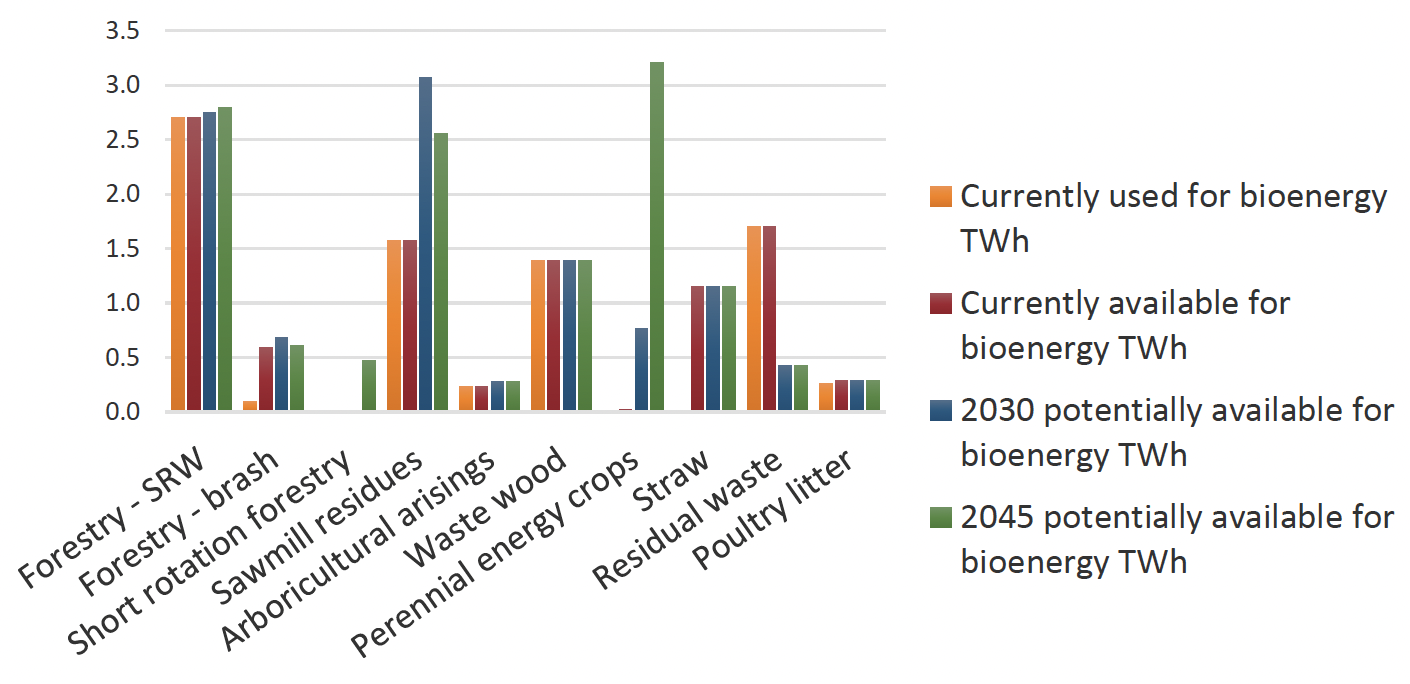
Figure 1.1 – Source: Comparing Scottish bioenergy supply and demand in the context of net zero targets (climatexchange.org.uk). Details of this chart can be provided upon request.
The research suggested no expected increases in the availability of wetter resources up to 2045 (primarily used in anaerobic digestion for biogas and biomethane production), but that many of the currently available resources are underutilised. (Figure 1.2) There are small amounts of other wet feedstocks available, totalling 0.08 TWh, which include some other distillery by-products, whey, fish and shellfish waste, and animal by-products.
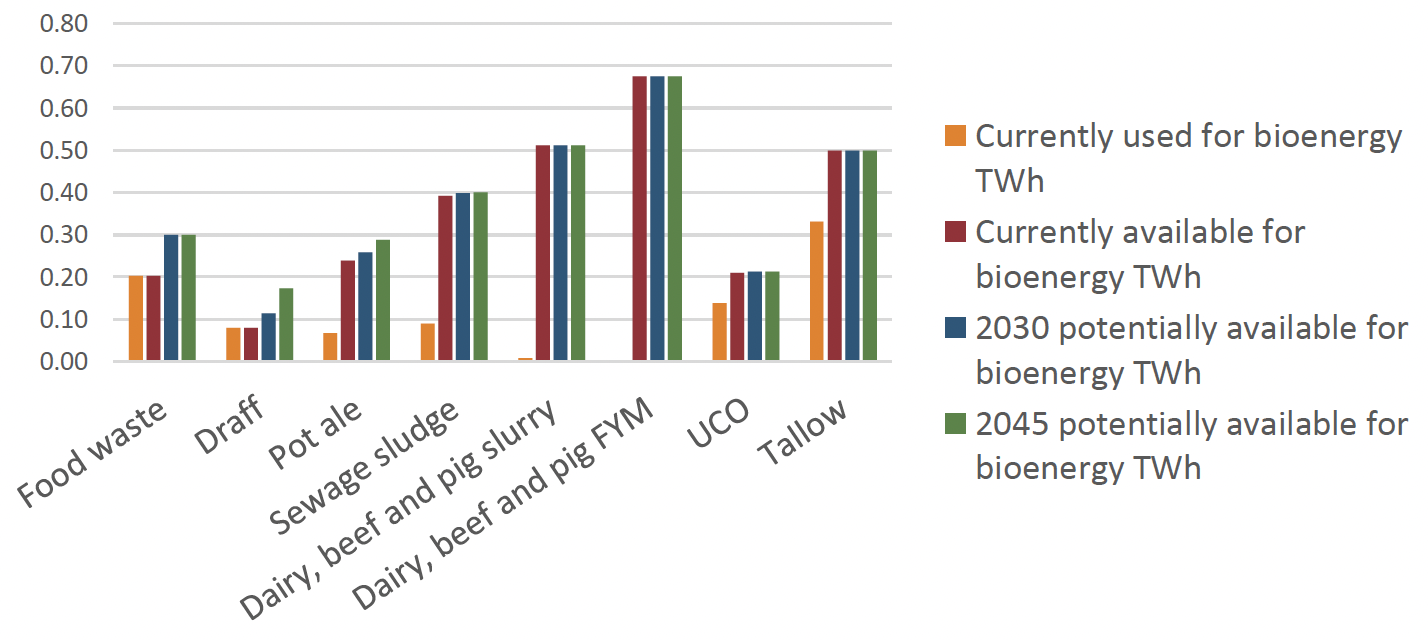
Figure 1.2 – Source: Comparing Scottish bioenergy supply and demand in the context of net zero targets (climatexchange.org.uk). Details of this chart can be provided upon request.
Consideration needs to be given to the locations in which bioresources are produced versus where they are going to be used. The wetter bioresources can be more difficult and costly to transport. Although solid bioresources are easier to transport, road transport is currently a significant source of emissions and is more expensive the further the distance travelled.
The findings from the research of the potential domestic bioresources align reasonably closely with the pathways as set out in the Climate Change Committee’s (CCC) 6th Carbon Budget estimates for Scotland's bioenergy demand. The CCC set out an increase in demand from 7.6 TWh in 2020 to 10.3-23.5 TWh in 2045. The findings from the research suggests that our potential domestic production in 2045 could meet the CCC’s expected demand in 2045. (Figure 1.3)
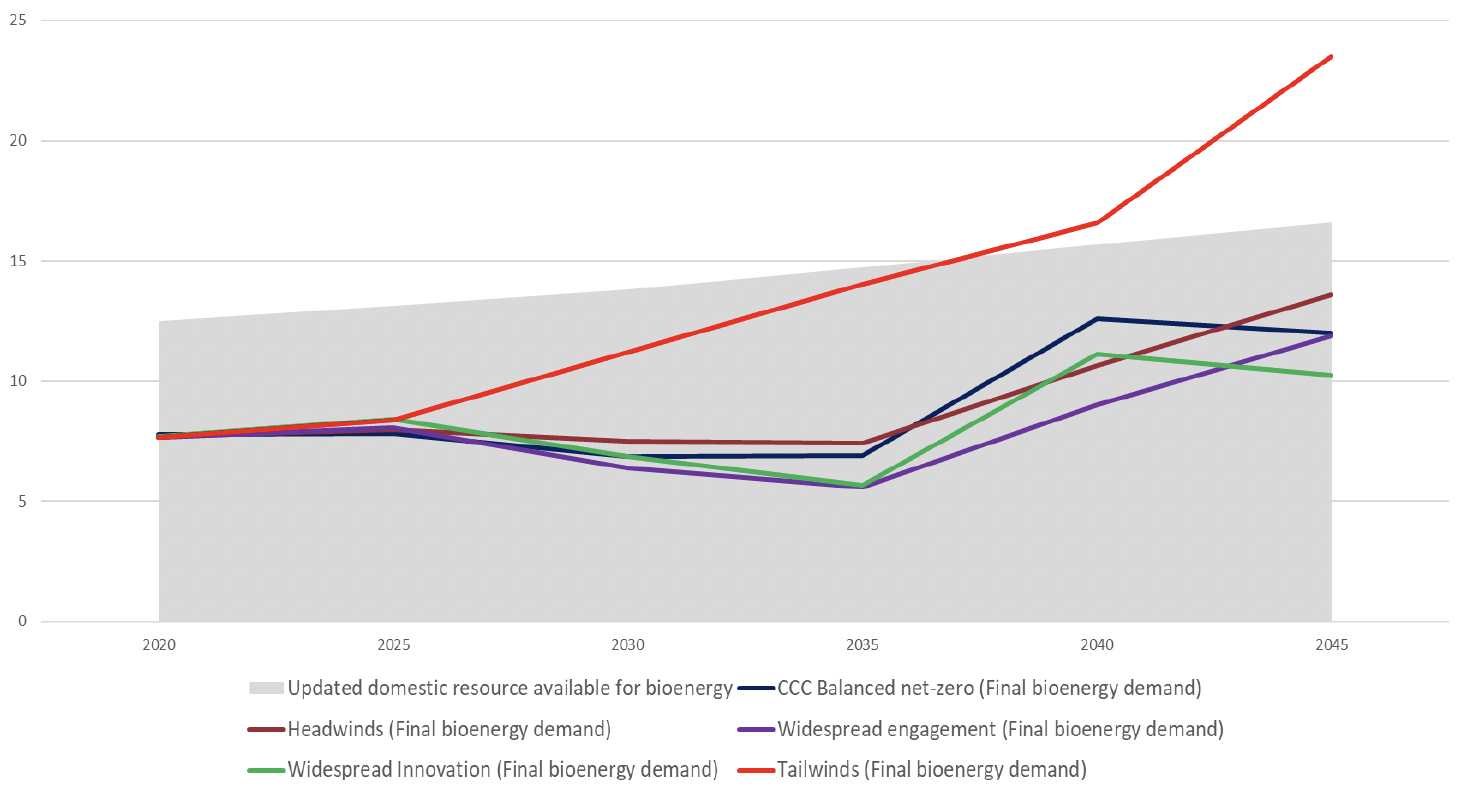
Figure 1.3 – Source: Comparing Scottish bioenergy supply and demand in the context of net zero targets (climatexchange.org.uk). Details of this graph can be provided upon request.
2.4. Perennial Energy Crops
Perennial energy crops (generally Short Rotation Forestry (SRF), Short Rotation Coppice (SRC) and Miscanthus, which can be referred to as second-generation feedstocks) are non-food plants that are cultivated for the purposes of energy production. See Annex D for more details on these crops.
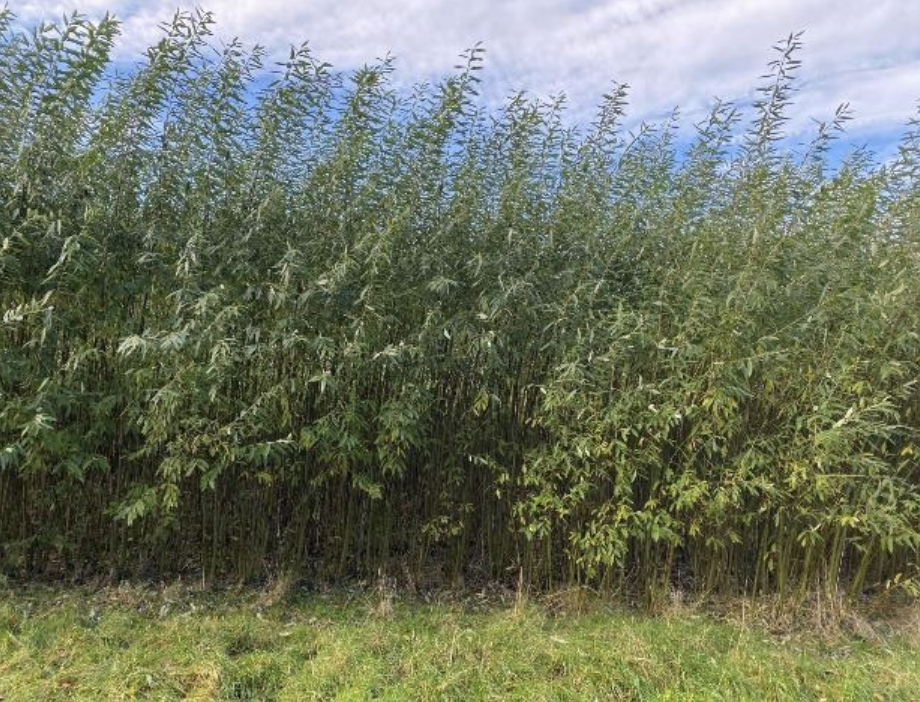
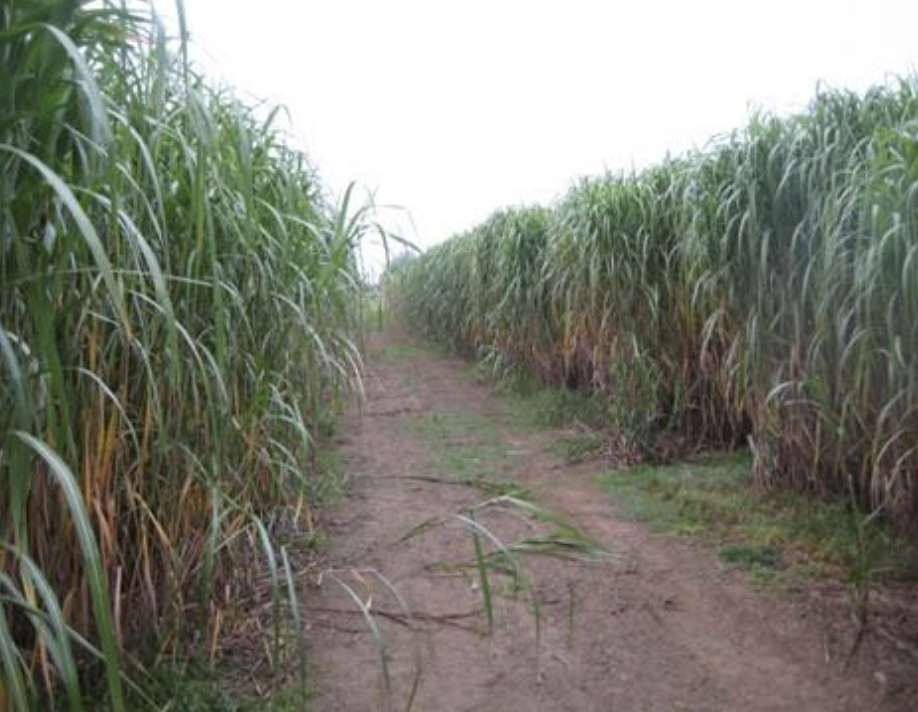
Photo credit Crops for Energy
Perennial energy crops have the potential to improve output on currently less productive land. They can be grown on land that is polluted or prone to flooding, and can help build resilience to extreme weather.
Fast growing bioenergy crops can quickly accumulate large quantities of carbon above and below ground, helping to remove carbon from the atmosphere. The fallen leaves and branches also add organic matter to the soil. The roots continue to grow throughout the lifetime of the plant, storing carbon in the soil even after each harvest. All of this could help to reduce emissions from agricultural land when delivered as part of a strategic land management plan.
Biomass Connect have been carrying out trials and research to gain further understanding of the potential impacts on biodiversity and ecosystems from planting various types of energy crops. Willow has been found to attract pollinators and when integrated within an agricultural landscape they can help improve biodiversity. Planting different types of willow can also help to improve habitats for birds.
Evidence suggests that the impact of bioenergy crops on biodiversity is context-dependent. A meta-analysis led by the University of Southampton found that non-food bioenergy crops improved farm scale biodiversity, compared to food-based agricultural land use (managed grasslands or arable crops). These biodiversity benefits were due to reduced management intensity, provision of features more similar to natural ecosystems, and increasing complexity or heterogeneity in the landscape.
However, this meta-analysis highlighted trade-offs for food production, since the reported benefits to biodiversity are based on the assumption that food-based agricultural land is freed up for their deployment. If agricultural land is not used and bioenergy crops are instead grown on natural ecosystems, this could also negatively impact on biodiversity.
Implications for biodiversity are therefore complex and context-dependent. Careful planning and protections will be required to manage the potential synergies and trade-offs between goals for bioenergy, biodiversity and food production. This highlights the importance of taking a joined up approach to tackling the climate and nature emergencies while also supporting future food security.
2.5. Scotland’s potential for perennial energy crops
In 2020 we commissioned research on perennial energy crops and their potential in Scotland. The purpose of this study was to review and identify the potential constraints for increasing domestic production of energy crops on low-grade agricultural or underutilised land.
The following assumptions were made in the research:
- For SRC and Miscanthus, the better-quality land was excluded with the focus being on land criteria 4.1 - 6.1. (see Annex E – Macaulay Land Capability for Agriculture (LCA) classification )
- Elevation and slope angle were considered, anything too high or steep was excluded.
- Soil type - it was agreed to exclude soil types which had high organic matter contents (peat), soils which were excessively shallow or stony and those which had a marine or estuarine influence (saline) as these were deemed unsuitable for agricultural purposes.
- Land currently used for forestry was excluded.
- Waterbodies were excluded.
- Protected land – for either cultural, scientific or biodiverse reasons was excluded.
The research found that theoretically a significant amount of land in Scotland is suitable for planting of energy crops, around 900,000 ha. The review of the potential domestic bioresource built on this research and found that the following levels of planting were realistic in Scotland, when taking into account the other demands on our land and the need to deliver negative emissions. (Figure 1.4)
| Year | Crop | Energy Output | Land requirement |
|---|---|---|---|
| 2030 | Short Rotation Coppice (SRC) | 0.8 TWh/yr | 26,999 ha |
| 2045 | Short Rotation Coppice (SRC) | 3.2 TWh/yr | 75,250 ha |
| 2045 | Short Rotation Forestry (SRF) | 0.5 TWh/yr | 15,008 ha |
Figure 1.4 Source: Comparing Scottish bioenergy supply and demand in the context of net zero targets (climatexchange.org.uk)
3.7 TWh/yr of energy would be sufficient to heat 300,000 homes every year, 12% of households in Scotland.
Understanding the impact that planting energy crops may have, depending on where they are located, is an important consideration. The Macaulay Land Capability for Agriculture (LCA) classification was developed to better represent what was possible on each piece of land, based on biophysical properties (see Annex E).
Scotland has 5.4 million hectares of agricultural land with over 80% of calorie production coming from land capability classes 2 to 3.2. The research into perennial energy crops in Scotland identified that the greatest areas of calorie production could be avoided by restricting SRC and miscanthus to land classes 4.1 - 6.1.
The findings indicate that planting of perennial energy crops could be done at a scale to meet future demand without significantly impacting on food security. However, land managers will have site specific insights on how land is best used given its location, local demands and economic returns.
2.6. Integrating energy crops to Scotland’s landscape
There is a limited amount of land which is suitable for growing bioenergy crops and consideration needs to be given to other priorities which this land must meet – such as food/feed production, housing, woodland creation, peatland restoration, nature restoration and protection of ecosystems. All of these demands require careful consideration, and a balance must be struck to ensure we can maximise the amount of sustainable domestic biomass produced without significantly impacting wider land use needs and opportunities.
The Scottish Government has already set out a number of actions that will determine how we use our land in the future:
- We have committed to create 18,000 hectares of new woodland per year from 2024/25.
- We are providing £250 million to support the restoration of 250,000 hectares of degraded peat by 2030. (24% of the degraded peatland in Scotland)
- We have set an ambition to increase onshore wind capacity from just over 9 GW currently to 20 GW by 2030, and we are looking to set 4-6 GW ambition for solar.
- As part of our Biodiversity Strategy, we are committed to protecting at least 30% of land and sea for nature by 2030.
- Through the Vision for Agriculture, we are committed to working with farmers and crofters to meet more of our own food needs sustainably and to farm and croft with nature.
On top of these actions, and as set out above, we also need to maximise the amount of domestic biomass which can be sustainably produced. This must only be done where it does not negatively impact wider land use needs and requirements, and development of the bioenergy sector must align with and support Scotland’s goals for protecting and restoring nature. High quality food production and rural development are also priorities which need careful consideration when assessing impacts of land use change.
The EU’s Renewable Energy Directive (RED) contains sustainability and greenhouse gas (GHG) emission criteria which apply to the production of biofuels, bioliquids and biomass fuels. It sets out the types of land that should be protected and should not be considered for the planting of energy crops. These land types are:
- Primary forest or other woodland
- Areas designated for protection of rare, threatened or endangered ecosystems or species
- Wetlands
- Peatland
- Highly biodiverse grasslands
Building on the principles set out in the EU Directive, and taking account of Scotland's existing land use policy and the evidence base set out above, this draft Bioenergy Policy Statement is consulting on the following principles that can help guide sustainable development of perennial energy crops and align with our commitments to protect our land for nature:
1. Native energy crop species should be prioritised over non-native;
2. Cropping cycles should be as long as feasible and economically possible;
3. A diverse mix of crop species and crop structures should be used;
4. Regenerative farming principles which focus on protecting and improving soil health should be used.
Scottish Forestry would require an Environmental Impact Assessment (EIA) be carried out if planting SRC in a sensitive area, such as a National Park or protected area, and if over 2 hectares in a National Scenic Area. Where no part of the land is in a sensitive area the threshold for an EIA is 20 hectares.
An agricultural EIA would be required if ploughing unimproved land or if there were material re-structuring of agricultural land.
The Vision for Scottish Agriculture outlines our aim to transform how we support farming and food production in Scotland to become a global leader in sustainable and regenerative agriculture. Any future planting of energy crops should align with these principles and with our commitment to tackle the biodiversity emergency in Scotland.
The Agricultural Reform Routemap provides further clarity on how we intend to deliver the ambitions set out in the Vision. This includes new conditions being introduced from 2025 and the introduction of the new agricultural support framework to deliver high quality food production, climate mitigation and adaptation, and nature restoration.
Although Short Rotation Coppice (SRC) and Miscanthus are supported by the existing agriculture support, there has not been sufficient market demand to encourage uptake. We expect this to change in the future.
We are committed to co-designing future rural support schemes and in doing so will seek to ensure opportunities for energy crops are considered, and future rural support does not create any barriers.
Increased biomass production will need to provide economic opportunity for rural communities, farmers, crofters and land managers. Supporting skills development and good quality jobs which can encourage people to work in rural areas could ensure that local communities are actively involved and genuinely benefit from new land uses that support net zero.
We are currently conducting further research in collaboration with ClimateXChange on the economic and just transition opportunities that energy crops may present, such as income diversification for farmers and land managers. This project will build on the previous land use research outlined above, that identified land potentially suitable for planting energy crops. It will also consider the enablers and barriers that influence the economic viability of energy crops. In this way, we will investigate the just transition opportunities for farmers and land managers at both lower, farm-scale and greater levels of planting. This research will also help to inform discussions on a Just Transition for Land Use and Agriculture.
Consultation questions on increasing domestic biomass production through the planting of energy crops (Short Rotation Coppice (SRC), Short Rotation Forestry (SRF) and Miscanthus):
7. The Climate Change Committee (CCC) advise that the UK will need 700,000 hectares of perennial energy crops by 2050 to meet their pathway to net zero. How much could Scotland contribute towards this figure and what evidence is available to support your view?
8. What would encourage you to use biomass from domestic perennial energy crops as a feedstock?
9. What are the opportunities or challenges to growing energy crops and what would encourage planting at a commercial scale in Scotland?
10. Can you provide best practice examples which could help integrate energy crops within the landscape and within the agriculture sector?
11. Can you provide best practice examples which could help restore and regenerate biodiversity, alongside energy crops?
Contact
Email: bioenergypolicy@gov.scot
There is a problem
Thanks for your feedback